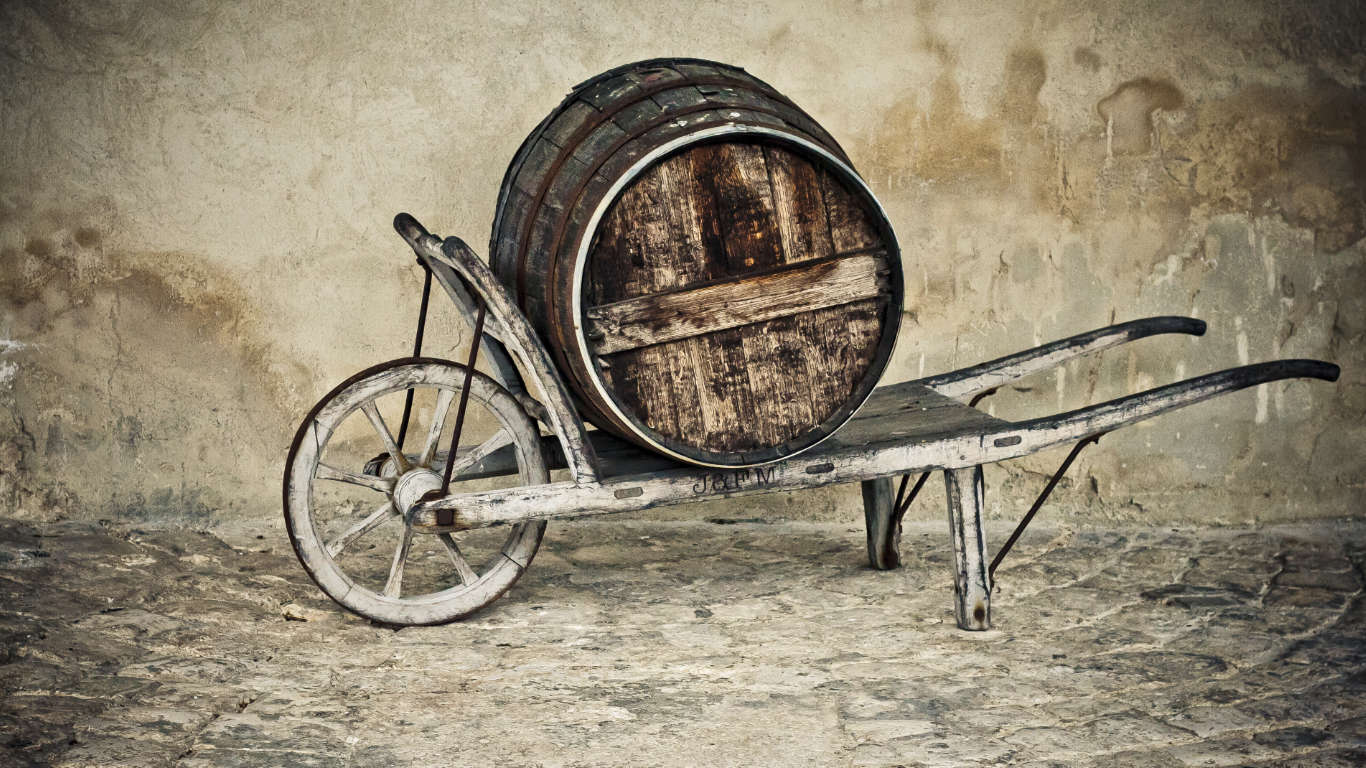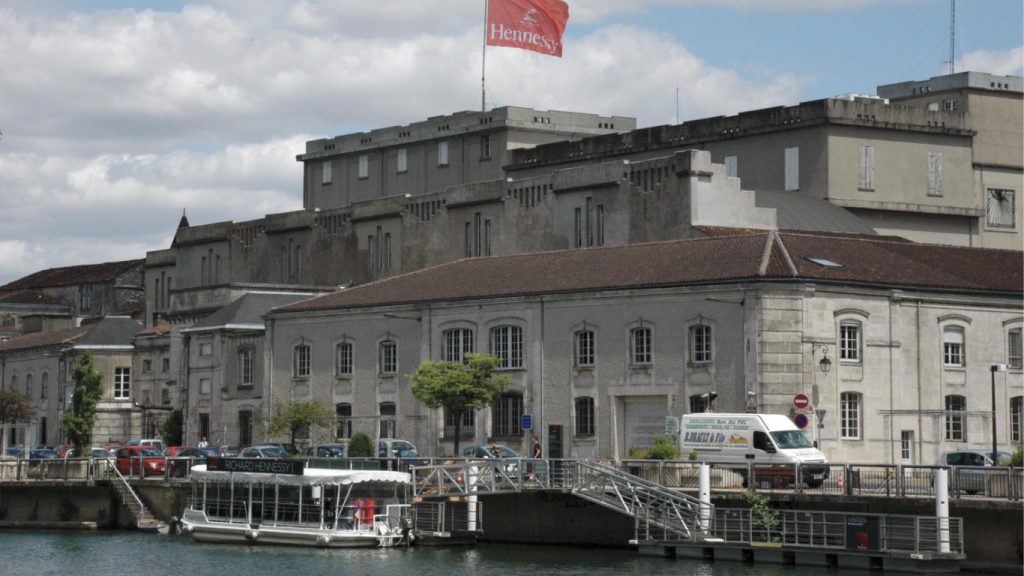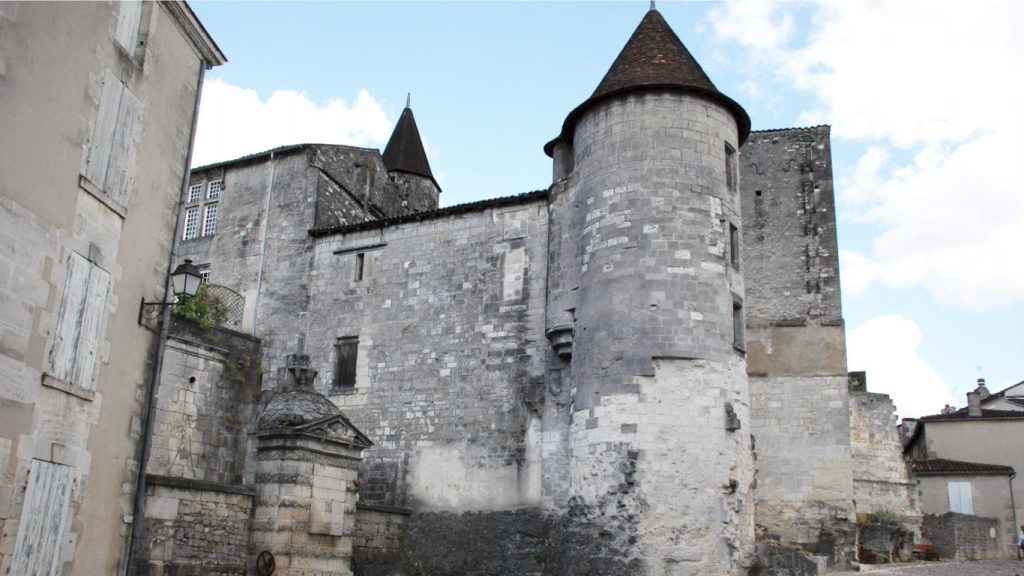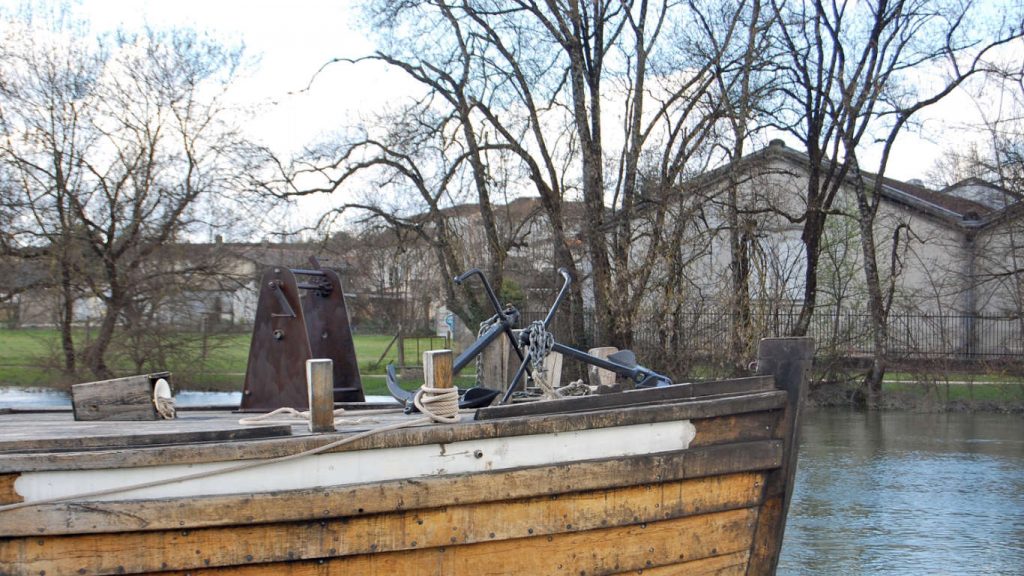
The Town of Cognac
Walk around the old town: here the narrow streets are a mix of narrow medieval timber framed houses that once housed the workers and the grander mansions of the wealthy merchants.
As you approach the town of Cognac in the Charente, the scenery changes from fields of grazing cattle to neat rows of vines, stretching as far as the eye can see. The town is famous all over the world thanks to cognac, the grape-based spirit that has been made here for the past 300 years – French writer Victor Hugo called it the ‘liquor of the gods’.
Cognac is a town full of history. King François 1 was born here in 1494. A contemporary of King Henry VIII of England he is considered France’s first Renaissance king. He gave the town the right to trade salt using the river, so creating the foundations of its commercial success that was further enhanced when it went into cognac production.
The spirit was first made as an alternative to wine as a preventive drink against scurvy – wine was difficult to transport and took up a lot of space. Double-distilled and turned into brandy (cognac) it was more compact and more stable so travelled well but also tasted better after being aged in oak casks.
Today the town of Cognac continues to revolve around the spirit, its fortunes rising and falling according to the popularity of the drink.
What to Do and See
Explore the city centre
Walk around the old town: here the narrow streets are a mix of narrow medieval timber framed houses that once housed the workers and the grander mansions of the wealthy merchants. Points of interest include the window called ‘King’s balcony’ which is half way along Rampe du Chateau. Amongst the decoration are two salamanders, the insignia of King François 1 found throughout this part of town.
Also along this street is the Creux de Charlotte, once the chateau’s water tank, but turned into a public wash house after the Revolution.
The two crenellated towers along Quai Maurice Hennessy date from 1499 –1500 and which some of the few remains almost of the original fortified town.
Walk along Rue Grande, Cognac’s main street from the Middle Ages to the 19th century, which is evident in the half-timbered houses. The most well-known is Maison de la Lieutenance at number seven whose wooden storey dates back to the 15th century. The house owes its name to the lieutenant general of Cognac who lived there during the 16th century.
Down by the river are the blackened chais (warehouses) that still store barrels of cognac, their discoloured state caused by the alcohol evaporating into the surrounding air. The locals call this ‘the angels taking their share’ – sadly, the truth is less romantic as the culprit is a tiny fungus that thrives in the alcohol-laden atmosphere.
Another option is to follow one or both of the routes created by the tourist office to help you discover the town.
With ‘totem’ poles or panels that give information on the town’s history, the routes lead visitors through different parts of Cognac. These include the banks of the River Charente, place François 1er, place d’Armes, the Récollets convent and the gardens of the town hall.
The Parcours du Roy route takes visitors back in time to the era of the salt trade and then the brandy industry, thanks to its pathway through the beautiful streets of the old town.
Take the Parcours Belle-Epoque, route and discover the urban growth that took place in the 19th century thanks to the extraordinary economic development of that dazzling era.
Also take a look at the booklet, available from the tourist office, called ‘Laissez-vous conter Cognac’ or ‘Discover the world of Cognac’ which contains a programme of six visits that are a little different. The ‘Les instantanées’ (or ‘Snapshot tour’) tours is all about getting to know a particular place or a district of the town during a brief visit of no more than 30 minutes.
The ‘Rendez-vous en terres cognaçaises inconnues’, meanwhile, take visitors on a mystery trip to a less well-known but still exceptional feature, monument or site in the region. All you know in advance is a place and time to meet – nothing else.
The ‘Savoir-faire et des Hommes’ tour focuses on local personalities. Artists, artisans and designers living in the region open up their workshops to share their knowledge and passion for their art or craft.
Take a cognac tour
One of most popular tourist attractions is a tour of one – or more! – of the many cognac producers to learn the history of cognac, how it is made plus enjoy a tasting or two. Most of the big names offer a tour – more information. It’s also worth asking the tourist office about tours of the surrounding vineyards and smaller producers where you can also buy direct.
Château de Cognac: the birthplace of François 1 is now called Château de Cognac. During its illustrious history it hosted the marriage of Richard the Lionheart’s son to Aurélie de Cognac in 1190. During the French Revolution it was sold as national property and bought in 1795 by cognac producer Baron Otard. Today it is the headquarters of Otard cognac. A tour includes some of the rooms of the château.
Visit a Museum
Cognathèque: a permanent exhibition devoted to cognac – see and buy 450 different cognacs as well as 50 types of pineau, the delicious aperitif of the Charente. 8 place Jean-Monnet; Tel: +33 5 45 82 43 31
Le Musée des arts du cognac: learn more about the history and economic impact of the Cognac industry. Les Remparts, Place de la Salle Verte, Cognac.
Le Musée d’art et d’histoire: work of local artists and collections of art nouveau glass. 48 bd Denfert Rochereau, Cognac.
Take a cruise on a gabare
The traditional flat-bottomed oak boat that once used to transport cognac, salt and other produce, today transports visitors along the Charente. Read more …
What to See and Do near Cognac
Espace Culturel François Mitterrand: in the nearby town of Jarnac, it’s dedicated to former French president François Mitterrand who was born in the town. Read more …
The Village Gabarrier: the village of Saint Simon was once the site of the Charente’s most important shipyard. Read more …
Bourg-Charente: take the tow-path from Cognac and follow the river to this medieval chateau that’s overlooked by a grand château owned by the family behind Grand Marnier (unfortunately, it is not open to the public). You can, however, have lunch at the Charente’s only Michelin-starred restaurant, La Ribaudière.
Tourist office:
Cognac: 16 rue du XIV Juillet;
Tel: +33 5 45 82 10 71
How to Get to Cognac
Poitiers Airport is two hours away by car. There is also the airport at La Rochelle which is about 90 minutes away. The TGV from Paris to Angoulême takes between 90 minutes to two hours.
Photo 1 and Photo 4 by Pierre-Alain Dorange / CC BY 2.0 images cropped; Photo 2 and Photo 3 by Pug Girl / CC BY 2.0 images cropped; Photo 5 by Nicholas Horne / CC BY 2.0 image cropped





